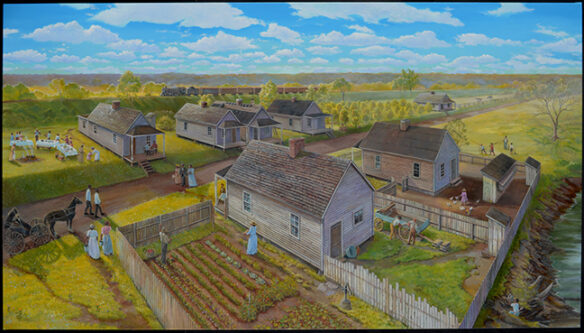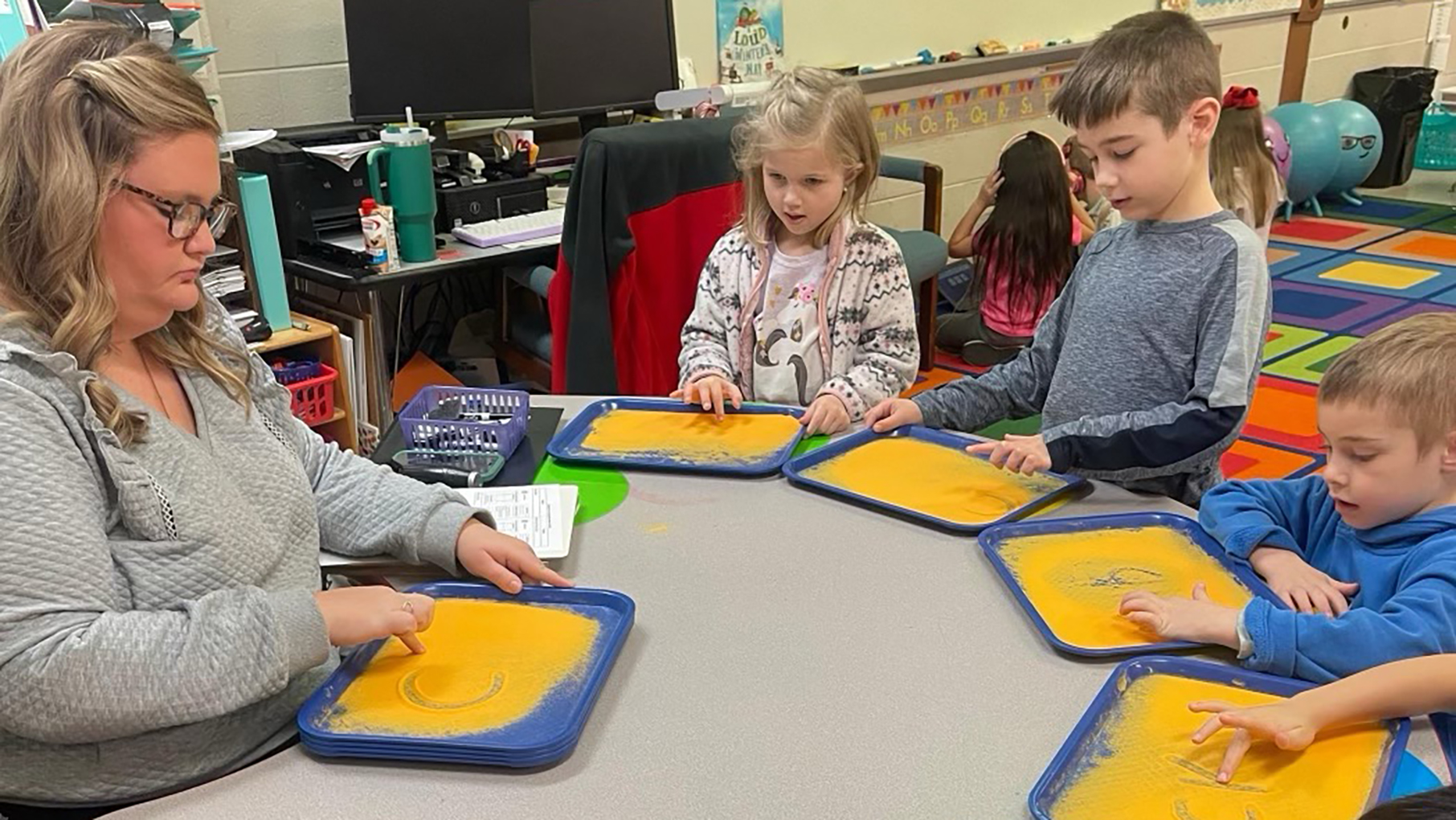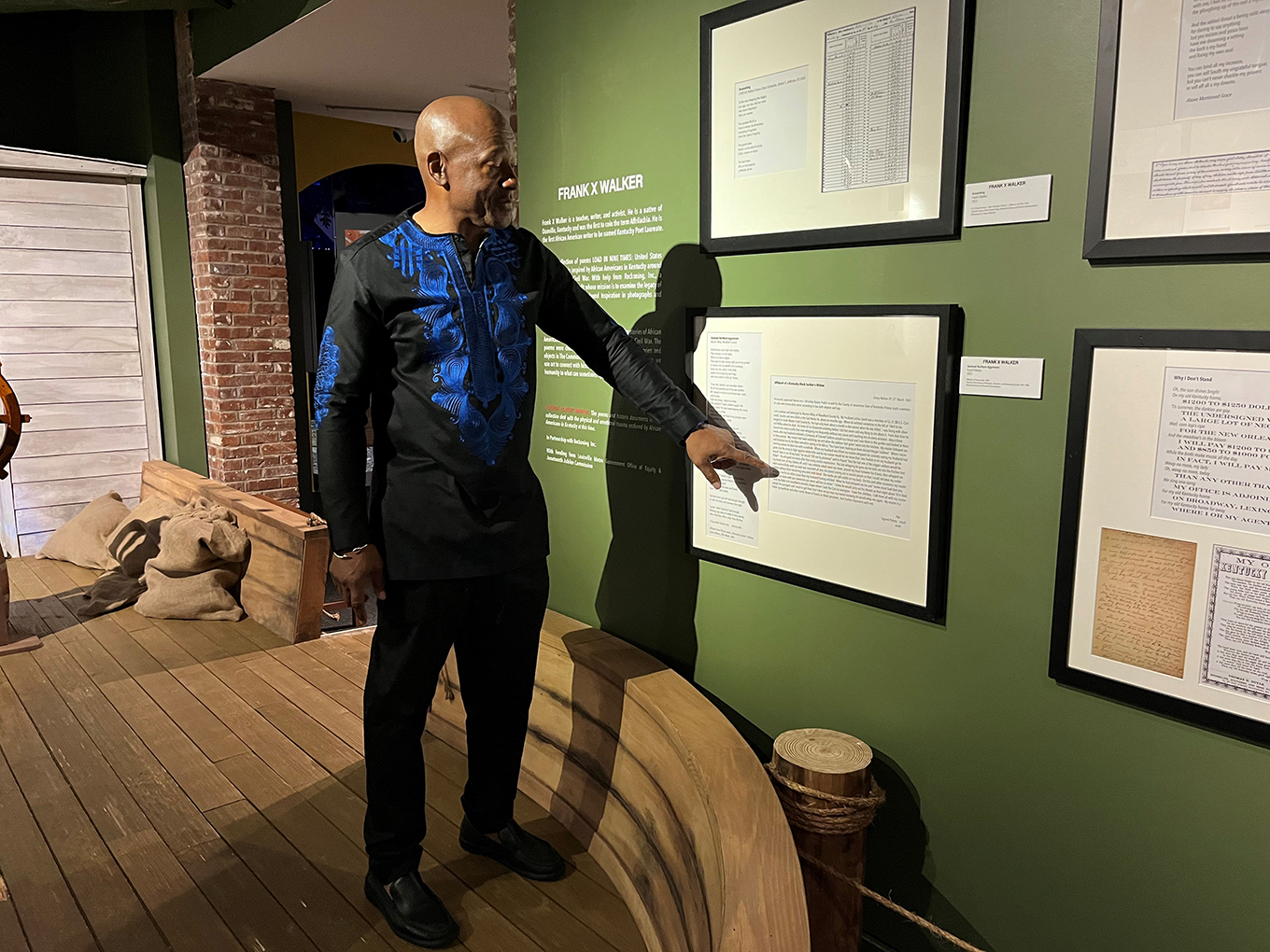
An artist’s drawing of what DeRoode Street in Davis Bottom might have looked like in the 1890s. Photo courtesy Kentucky Archaeology Society
This article highlights aspects of Kentucky’s deep (and not so deep) past as revealed by uncommon and often overlooked documents, archaeological sites and the artifacts they hold.
Early Twentieth-Century Suburban Communities
After the Civil War, suburban development increased in American cities as wage labor became widespread. Newly arrived immigrants, African Americans recently freed from the institution of slavery, and poor farmers flocked to cities. They were looking for jobs that rapidly expanding industries provided.
Land speculators divided up farms and marginal land on town edges into residential neighborhoods. On small, narrow lots, they built inexpensive housing, targeting lower-wage earners and the working class.
By the early twentieth century, these residential developments had become communities with their own distinctive character. Some neighborhoods took on ethnic identities because immigrants from a particular country or region settled there. Others were places where people shared an economic situation or social class; or worked in the same industry.
Davis Bottom
Lexington was no different. After the Civil War, demand for cheap housing was high. So, in 1865, Lexington lawyer and civil rights activist William “Willard” Davis bought about 100 acres of poorly drained, marginal, low-lying land along Lower Town Branch – a “bottom land” – not far from downtown. Davis subdivided the property into 43 long, narrow house lots, establishing the Davis Bottom neighborhood. But “bottom” in the neighborhood’s name meant something else to people of that era: a low-lying, crime-ridden district where poor people, often of a particular ethnic descent, lived in cheap housing.
Narrow lots meant narrow houses, so many of the neighborhood’s early dwellings were frame shotgun houses. Cheap and easy-to-build, shotgun houses had no hallway and no bathroom (residents used privies/outhouses). A central fireplace was the main source of heat. Wooden posts set into the ground were a cheap, quick foundation.
Neighborhood Residents
Free African Americans were Davis Bottom’s first residents. They could not live anywhere they wanted. Because there were no residential restrictions for Whites, though, from the very beginning, European immigrants and native-born Kentuckians of European ancestry also called Davis Bottom home. The neighborhood’s integrated character was always noteworthy in this regard. In time, the neighborhood included businesses, schools, and churches. Southside Park, the scene of picnics and ballgames, was a constant in everyone’s life.
The labor of Davis Bottom’s residents provided a solid foundation for Lexington’s commercial growth in the late 19th and 20th centuries. They helped make it a successful city. Residents worked in tobacco warehouses, drying and breaking the leaves. They also were auto mechanics, railroad workers, hotel maids, and grooms in the horse industry.
Lexington’s Poorest Neighborhood
Davis Bottom’s residents were linked by low socioeconomic standing and by the isolation created by the land’s marginal nature. Despite its choice location near downtown, Davis Bottom was geographically isolated – railroad tracks and industries surrounded it, and city buses did not serve it.
Social segregation made life hard for Davis Bottom residents. There were racial boundaries, because some people were Black, and there were economic boundaries, because all were poor, working-class people.
So, what was the response of this racially integrated, working-class neighborhood to its isolation and segregation? A strong sense of neighborhood identity and community. “Resourceful, generous, neighborly” – that’s how residents described their community to historians. For more than 130 years, established Davis Bottom families and newcomers alike built respectable lives, rich with community and family.
A New Neighborhood
A road to ease traffic congestion in downtown Lexington, which would extend through Davis Bottom and destroy much of it, had been on the books since the early 1930s. In response to neighborhood protests, The city repeatedly scrapped its plans over the course of 60 years. But finally, it could wait no longer. In the early 2000s, the Newtown Pike Extension highway project destroyed the Davis Bottom community. Highway construction started in 2014, and the highway extension – Oliver Lewis Way – opened to traffic in 2017.
Prior to road construction, researchers carried out archaeological, archival, and architectural studies, and collected residents’ oral histories. A new planned community, called Davis Park, now stands on the former neighborhood’s footprint. The city of Lexington created the Lexington Community Land Trust to keep housing affordable in Davis Park. The first of the former Davis Bottom residents moved into her new Davis Park home in 2016. Construction of the Davis Park Community Center began in the fall of 2023 and is expected to be finished by the end of 2024.
We rarely learn about the lives of working-class people, but their stories matter! The lives of all Kentuckians contribute to telling Kentucky’s story.
Instructional Resources
Diverse instructional resources for upper elementary through high school students, focused on the Davis Bottom neighborhood, are available to Kentucky teachers. These award-winning resources include lesson plans, curricula, and videos that consider archaeology; historic documents, maps, and photographs; oral history interviews; and documentary art. An award-winning documentary about the neighborhood’s history titled, “Davis Bottom: Rare History, Valuable Lives”, rounds out these educational resources. Among the many subjects students can explore are the neighborhood’s history, the lives of its residents – especially its most famous resident, Isaac Scott Hathaway – and the investigations archaeologists carried out in the backyards where shotgun houses once stood.
Teachers can access the resources through the Kentucky Archaeological Survey’s Davis Bottom webpage.
A. Gwynn Henderson is education director at the Kentucky Archaeological Survey, a program of the Department of Folk Studies and Anthropology at Western Kentucky University. She is also a facilitator for Project Archaeology and Prime Time Family Reading. Her archaeological research and publications focus on ancient Native farming cultures of the middle Ohio Valley. As a public archaeologist, she writes for children and adults, and works with others to develop lessons, booklets, videos, programs, and museum exhibits to raise awareness of Kentucky’s rich history.



Leave A Comment